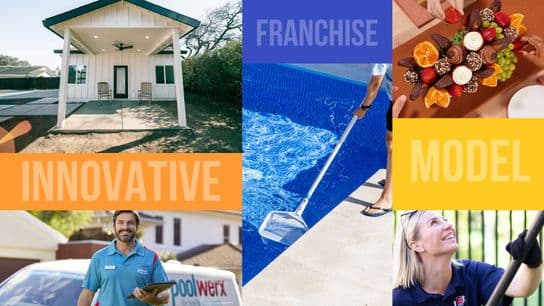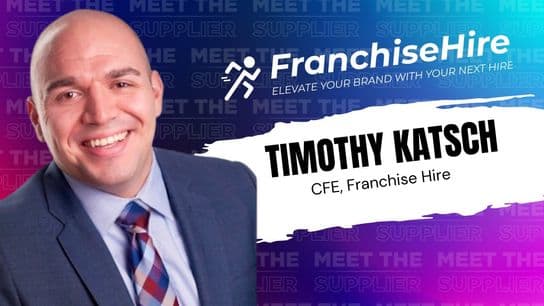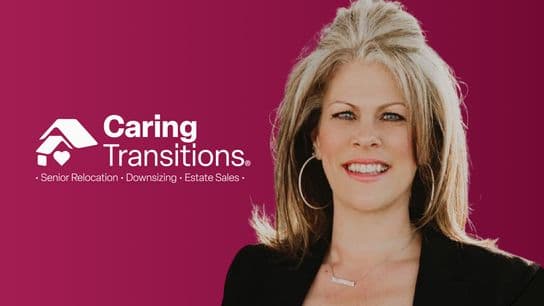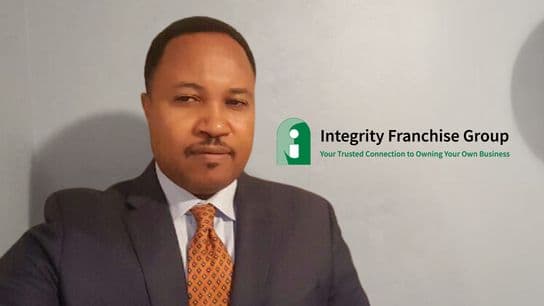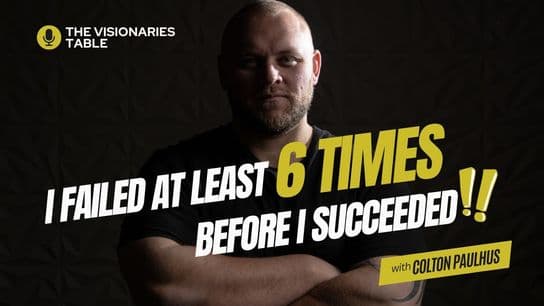What Might Be Missing From Your Content Arsenal: Three Marketing Professionals Weigh In
In today’s crowded marketplace, brands must deploy targeted and integrated content, focus on quality, nurture relationships and tell a story.
When it comes to modern branding and inviting audience action, an impressive content arsenal is non-negotiable. The qualified franchise candidate of today, just like the contemporary consumer, knows to research before they buy and has the myriad tools—from social media to traditional media to review aggregators—to do so effectively. So how do franchise brands stand out from the competition, and what best practices can they offer to branding teams across industries?
Mainland* spoke to Paul Pickett, Chief Development Officer of birding retail franchise Wild Birds Unlimited*; Brenda Febbo, Chief Marketing Officer for early education and childcare franchise Lightbridge Academy*; and Eric Martin, Vice President of Franchise Development for lawn care franchise Lawn Doctor*. Together, they offered these five tips for brands to optimize their content arsenal.
Target Content to Audience
While targeting content to audience is critical for franchisors—who must speak to both consumers and prospective franchise candidates, often in meaningfully different ways—the need for targeted content applies to all brands. Targeted content not only improves a brand’s chance of reaching the right audience, it also provides value to that audience and keeps the brand top-of-mind.
“It’s all about building awareness,” Febbo said. “It’s not just about promoting your business anymore; it’s about being the most relevant voice for your audience and helping your consumer solve problems and find support.”
Febbo explained that Lightbridge Academy’s strategy for reaching both the consumer and candidate pools is data-driven and optimized for SEO.
“We tap every data source we can, from demographic and psychological info, to surveys from parents, to data from external sources that chart buying patterns,” Febbo said. “Let’s say someone’s purchasing habits include a lot of diapers and formula; that’s probably a parent of a young child who would benefit from early education and childcare services.”
Febbo said that identifying a prospective consumer (or franchisee) given the data is just one part of the puzzle; audience members in both categories also have to be able to easily find the brand when they complete the research, or due diligence, that characterizes both modern consumers and modern franchise candidates.
“You need to be immediately available to your target audience,” Febbo said. “That means optimizing your content for search engines, and it means creating not just what you want to write about, but what those searching your brand want to read. Having that data-driven knowledge upfront before creating content is extremely important.”
Quality Is More Important Than Quantity
In order to most effectively cultivate a strategic understanding to guide the targeting of a brand’s content, both Febbo and Pickett emphasized the importance of “the deep dive.”
“When we’re considering where to build a new Wild Birds Unlimited location and doing our real estate research, we look closely at the local community demographics and the site demographics,” Pickett said. “We do a deep dive to make sure there is plentiful bird activity and interest in the area. It’s not just about population density or purchasing power. A classic market that has those two factors but insufficient bird activity is Las Vegas—and if you only looked for the first two, you wouldn’t be setting up a prospective franchisee for success.”
Febbo echoed that need for brands to dive deep while developing their content strategy.
“It’s about narrowing our focus on who is our customer. We have to ask, ‘Who is that perfect prospective franchisee? Who is our target customer? Where do they live? What do they buy?’ It’s about narrowing our focus as much as possible and going deep, not just wide,” Febbo said.
And when it comes to leads, Febbo argued, “quality is more important than quantity.”
“Less sophisticated marketers will throw spaghetti at the wall to see what sticks. But you have to do more; you have to ask, ‘How does your brand generate customer personas, like demographic info, buying habits/anonymized credit card transactions?” said Febbo.
While the more traditional or cost-wary marketer might push back in favor of a purely volume-focused approach, Febbo said that having a long-term lens is key.
“With some sophistication, you can actually lower your marketing costs because, the cost per candidate is higher on an individual basis, but the candidates you get actually buy. You’re looking for buyers, not shoppers.”
Make Sure You Have an Integrated Content Marketing Strategy
Febbo doesn’t mince words when it comes to the importance of strategy.
“You need a content marketing strategy. If you’re piecemealing it, you’re gonna have inconsistency and confusion and you’ll be working against yourself,” Febbo said. “It needs to be an integrated approach and it’s not always easy to integrate, but PR and content marketing need to be intertwined. That’s really where our relationship with Mainland has benefitted us. Time and again, prospective franchisees have said, ‘I read an article that made a difference,’ and it’s sponsored content crafted to inform them about who our brand is.”
“When you look at your [franchise] sales funnel, you have to think about how your content marketing can offer value to candidates at different points on the funnel,” Pickett said. “We understand that it can take time to buy a Wild Birds Unlimited franchise, so we deploy content at all stages of the funnel. Maybe candidates who have investigated us as an opportunity in the past didn’t sign on because it wasn’t the right time then, but as our content reaches them across different channels now, they realize that now it is.”
Nurturing multiple touch points in terms of the prospective franchisee pool means that franchise brands need to engage multiple content channels, such as email campaigns, franchise development websites, social media (Facebook, Instagram and LinkedIn often emerge as frontrunners for franchise development) and sponsored content rich in storytelling.
“We’ve treated PR in the past as the ‘promotion’ of your brand, but you can no longer deny that it’s intertwined with content marketing, and so our relationship with Mainland works because they understand the relationship and the leverage you get from combining the two,” Febbo said.
Focus on Your Audience’s Needs—Ask How You’re Doing and Nurture the Relationship
Martin underscored the importance of remaining accessible as a brand, whether those seeking information are consumers or prospective franchisees.
“At Lawn Doctor, from a franchise development perspective, we use FranConnect and our own internal communication tool where we have a mixture of ongoing nurture campaigns, or drip campaigns that include relevant sales-oriented info but also answer the questions we know our franchise candidates have,” Martin said. “We also leverage 1851 Franchise articles for our social media content, cross-sharing our sponsored articles on LinkedIn and Facebook.”
According to Martin, whether candidates encounter a brand via a portal or social media or another way, they are all looking for validation.
“People are looking for platforms or sources to tell them why or why not a particular brand could be a good fit,” Martin said—a truism that also applies on the consumer side. “I always feel the best way to make people feel comfortable is to share our stories. A brand is made up of people, and people have stories. We can nurture our candidate relationships by focusing on story.”
“As much focus as goes into lead generation needs to go into conversion and validation,” Febbo said in reference to the prospective franchisees as a target audience. “It’s about really guiding [prospective franchisees] and educating them about your brand, the process of joining and your system, so that they’re making informed buying decisions.”
Febbo insisted that it is a brand’s responsibility to offer transparency and support to those engaging its content.
“As the brand, you need to make the decision-making process easy, not put the burden on [the prospective franchisee. A lot of buzzwords are out there around customer experience, and a lot of industry professionals emphasize process, but your process should be based on your audience’s experience,” Febbo said. “You are there not to serve your company, but to serve the needs of your prospective franchisee.”
Right along with that focus on brand transparency, Pickett said that brands ultimately must be prepared to listen to candidates and consumers alike
“You need to ask how you’re doing. When we’re sending out content, you have to go back to the well, pick up the phone and say, ‘You’re getting these emails. Which content is inspiring to you? What actually resonates?’” Pickett said. “And what I have found is, prospective candidates want to know how current franchisees feel about Wild Birds Unlimited; they want to know what makes our current owners excited in the morning to go to work? It’s about human stories and listening to what our franchise candidates want to read.”
When it comes to relationships with real people, Pickett said, don’t get lost in the numbers.
“We look at the metrics—the reads and shares—but there’s nuance the numbers can’t give you. To understand what moved someone to buy, you have to pick up the phone and call,” said Pickett.
Don’t Try to Sell; Tell a Story
“You have to do away with platitudes,” said Pickett. “You have to commit to storytelling. Give people a compelling reason to be interested and to engage. People don’t have the time and energy to engage with somebody who doesn’t give them value-rich content.”
“Years ago, it was more about getting a prospective owner to buy with, ‘Here’s the investment, here’s the potential, this is why it’s a great opportunity,’ and we measured everything in terms of leads and clicks,” Martin said. “Now, there’s over 3,500 franchises in the U.S., so it’s a crowded market with lots of noise. That means that what matters more is: ‘Here is what we do, here is someone like you in this business and here are the reasons to take a closer look.’”
Now, Martin said, if brands want to take a franchise candidate’s time, they need to nurture the relationship, “which happens early through the sharing of stories and the reasons why your [franchise] system is a great fit.”
Or, importantly, why the system isn’t right for a given candidate.
“We are discerning in our candidate selection and we know our candidates are discerning, too. If we’re not right for you, that’s okay, but we say, ‘Look at what we’re doing and see if you relate.’ So many people today shop, look and explore before ever having an initial conversation. So you have to share your brand and image and mission through story—that attracts people to look at you closer,” Martin said.
With all of this focus on integrated storytelling, targeted marketing, brand transparency, it could be easy to get lost in the weeds. Pickett offered a final thought to pull brands out.
“The must-have elements to an effective content arsenal are these,” Pickett said. “Know what your differential advantage is; spend the time researching how your potential audience member wants to be communicated with; and give them options.”
*This brand is a paid partner of 1851 Franchise. For more information on paid partnerships please click here.


